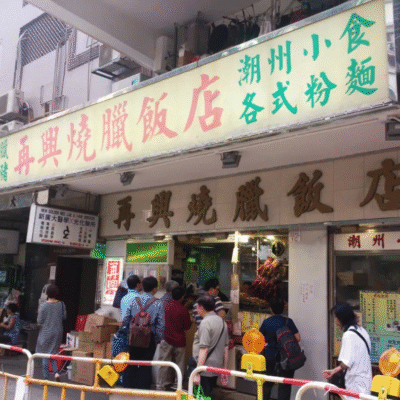Hong Kong, located along the coast of the South China Sea, is an important international financial, trade, and shipping hub. However, many people misunderstand its political status, and some even believe Hong Kong is an independent country.
In reality, Hong Kong is not a country; it is a Special Administrative Region of the People’s Republic of China. To understand this, it is necessary to examine Hong Kong’s historical evolution and current system.
British Invasion and Cession
The history of Hong Kong is one shaped and divided by external forces. In the 1840s, following the Opium War, Britain forced the Qing government to sign the unequal Treaty of Nanking, ceding Hong Kong Island. Later, the Kowloon Peninsula and the New Territories were leased, gradually forming the geographical layout of modern Hong Kong.

British rule not only occupied the territory but also deeply transformed Hong Kong’s social structure, economic system, and legal framework.
The colonial government established administrative systems, educational institutions, and urban planning, traces of which remain visible in Hong Kong’s cityscape today. This period turned Hong Kong into a unique fusion of Eastern and Western cultures and led to a lifestyle and mindset distinct from mainland China. Economically, Hong Kong prospered under British rule, becoming an international trade and financial center, yet social stratification and land scarcity emerged as significant issues.
The colonial legacy left Hong Kong in a complex state of “foreign control—partial autonomy—economic independence,” laying the groundwork for the later “one country, two systems” framework. From a legal and international perspective, Hong Kong was merely Chinese territory under British administration, not an independent sovereign state.
In my view, after the Treaty of Nanking, the people living in Hong Kong gained a relatively freer life. On the one hand, Hong Kong was no longer subjected to the violent rule and heavy taxation of the Qing government, thus avoiding the exploitation of the people at that time.
On the other hand, as Hong Kong was opened as a trading port, Western systems of commerce, education, and healthcare were gradually introduced, creating institutional and economic differences from the mainland. Although colonial rule also brought inequality and contradictions, comparatively speaking, the people of Hong Kong did obtain a more open living space and development opportunities.
The Brief Period of Japanese Occupation
During World War II, from 1937 to 1945, Japan occupied Hong Kong for three years and eight months. This period brought severe disruption to Hong Kong’s politics, economy, and daily life. The Japanese authorities imposed strict control, conscripting labor, altering currency systems, and creating shortages of food and essential goods.

Schools were closed, commercial activities were restricted, and residents endured harsh conditions under military rule. After the war, Hong Kong returned to British administration, facing a city devastated by conflict and displaced populations.
Rebuilding required not only the restoration of infrastructure but also the reestablishment of social order and economic stability. Hong Kong residents demonstrated resilience and adaptability, living under the shadow of occupation and contributing to the foundation of a distinctive local culture. This experience also reinforced the fact that Hong Kong had never possessed full autonomous governance; its fate had always been shaped by external forces.
Post-War British Administration
After World War II, Hong Kong returned to British administration until its handover in 1997. During this semi-colonial period, Hong Kong’s economy developed rapidly, emerging as one of the “Four Asian Tigers.” It retained independent judicial, monetary, and administrative systems, yet foreign affairs, defense, and key political decisions remained under British control.

This “semi-autonomous” status provided some degree of local governance, but Hong Kong lacked sovereign statehood. Residents became accustomed to independent urban management, a free market economy, and a relatively open social environment, while ultimate sovereignty remained with Britain. This historical context set the stage for negotiations leading up to 1997, when Hong Kong returned to China under the “one country, two systems” principle, retaining a high degree of autonomy.
From a historical perspective, Hong Kong’s semi-colonial status shaped its unique economic and social systems while confirming that it never had the qualifications of a fully independent nation.
Implementation of “One Country, Two Systems”
On July 1, 1997, Hong Kong returned to China, becoming a Special Administrative Region of the People’s Republic of China. The handover marked China’s reassertion of sovereignty and the beginning of the “one country, two systems” framework.
In fact, Hong Kong Island (1842) and the Kowloon Peninsula (1860) were permanently ceded to Britain under the Treaty of Nanking and the Convention of Beijing, with no time limit. The New Territories (1898), however, were leased to Britain for 99 years under the Convention for the Extension of Hong Kong Territory, set to expire on June 30, 1997.
The direct trigger for Hong Kong’s return to China was the expiration of this lease. Since the New Territories are closely connected to Hong Kong Island and Kowloon, Britain could not retain the main urban areas separately. Combined with China’s firm insistence on restoring sovereignty, this ultimately led to Hong Kong’s full return to China in 1997.
Under the Basic Law, Hong Kong maintains a high degree of autonomy while remaining under national unity, including independent judicial, monetary, and fiscal systems. However, high autonomy does not equate to independence. Hong Kong’s foreign affairs, defense, and major policy decisions remain under central government control, and national sovereignty permeates all aspects. Since the handover, Hong Kong’s economy, legal system, and way of life have differed from mainland China, yet this is a matter of institutional arrangement rather than national independence. Hong Kong’s identity reflects the accumulation of historical experiences, preserving the advantages of its colonial legacy while integrating with national sovereignty.
Over more than two decades, both Hong Kong society and the international community have come to understand “one country, two systems” as a balance between local governance and adherence to national interests and security.
My Personal Observations and Travel Experience in Hong Kong
As a visitor and long-time observer, I have my own impressions and understanding of Hong Kong. In recent years, with the implementation of the Hong Kong National Security Law, the city’s political and legal systems have gradually aligned with those of mainland China, bringing some changes to governance. Yet from my personal perspective, Hong Kong’s unique charm remains unmistakable.
Walking along Victoria Harbour, I am struck by the world-class skyline; from the top of Victoria Peak, modern skyscrapers blend with traditional neighborhoods in a fascinating contrast. In the alleys of Central, I can smell the aroma of local cha chaan tengs and see everyday life in the bustling markets. Historical and cultural landmarks, such as the Tian Tan Buddha on Lantau Island and the Wong Tai Sin Temple, not only offer beautiful sights but also provide a tangible sense of Hong Kong’s history, culture, and society.
Hong Kong’s history is complex: cession, colonization, and leasing have shaped the city’s unique identity, yet it has never truly separated from China. Today, what I see is a city that combines diverse cultures, a modern economy, and traditional customs—while also remaining a Special Administrative Region of China. Through travel and personal experience, I deeply feel that Hong Kong is both uniquely distinctive and undeniably part of China.





